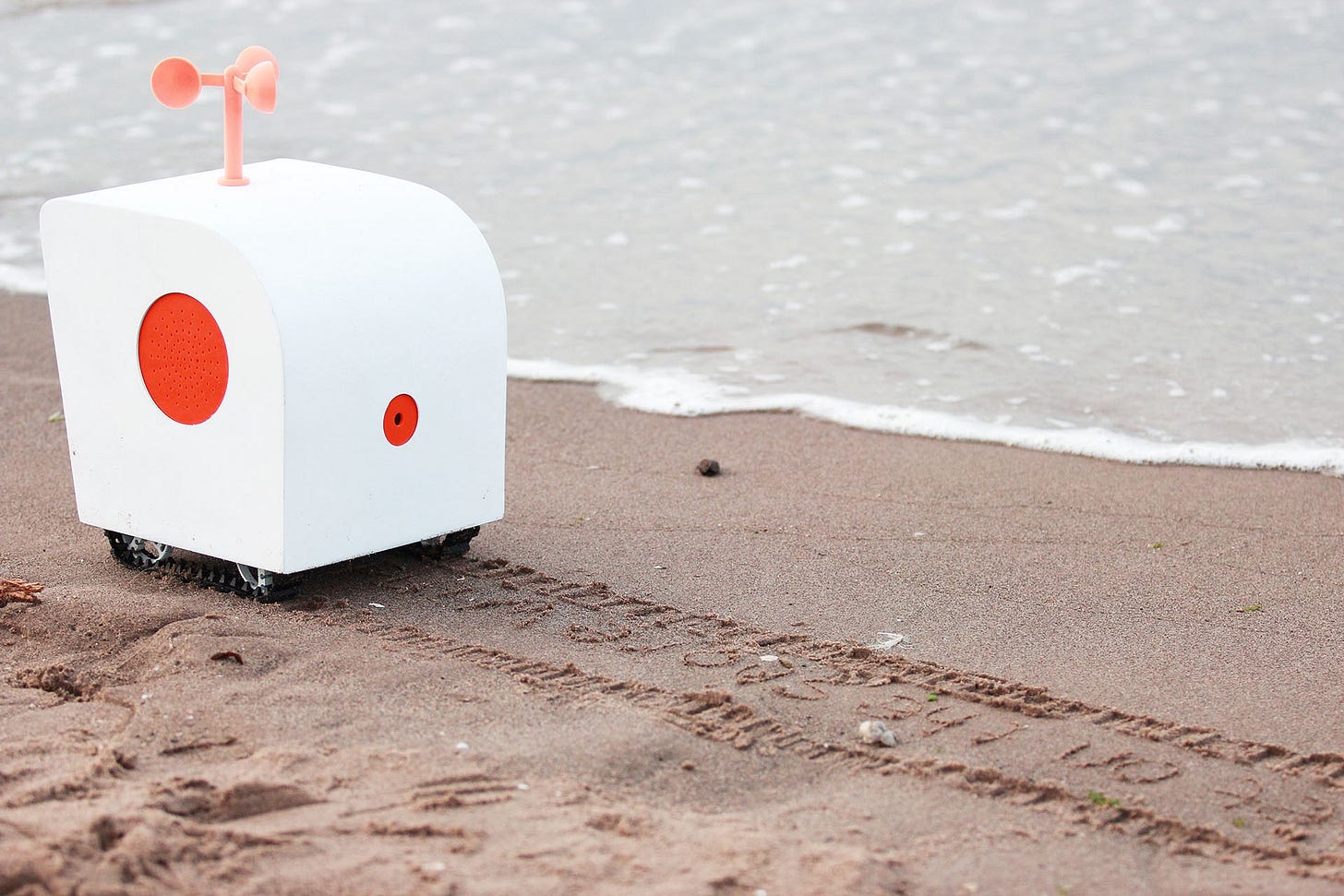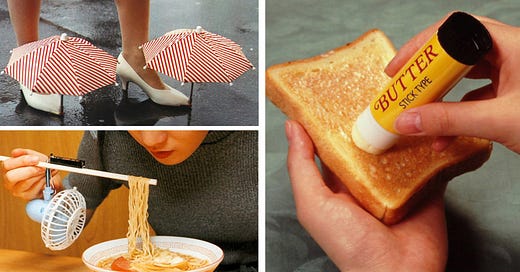Welcome to Design Lobster #7. We’re going serious and silly today. 🎭
Question: How might we design for non-humans?

Human-centred design is very good at delivering improvements to a product or service by paying close attention to the human needs being served and their circumstances. This close attention however has a blind spot. Other-than-humans – animals, ecologies, air and even machine entities like AI – don’t get any love at all in the HCD process. And there are consequences to this. By prioritising human needs, human-centred design can inadvertently create unsustainable systems that satisfy short-term consumer wants at great cost to the non-human other.
Some designers and theorists are trying to ‘un-center’ humans from the design process and explore ways it could systematically involve these kinds of non-human actors. So, rather than just referring to sustainability targets, ‘the climate’ becomes an active participant with its own needs. Of course, you can’t interview ‘the climate’ so there a different kinds of exercises to develop understand its needs and develop empathy including speculative realism, ontography and good old critical use (Design Lobster #4). It’s all quite wacky, but as designers we pride ourselves in our ability to empathise with other people. Empathising with things that aren’t people is only one short step further along.
Design takeaway: How could you take into account the non-human in your design process?
👽 Long-read on xeno-design here.
Object: Chindogu
Chindogu (珍道具) is Japanese for weird tool. In the 90’s the inventor Kenji Kawakami dedicated part of his magazine Mail Order Life to these odd inventions that seem to solve a problem but in fact create other problems (and some embarrassment) in the process. Most chindogu are very funny because the magnify tiny problems like keeping shoes dry or spreading butter into hugely over-engineered products. I like them because they have an anarchic spirt, following a weird idea through fully, no matter where it leads you to.
Chindogu are also an obvious lesson in the potential for overreach in design. Just because you could solve a problem somehow doesn’t mean you should. You might be missing the wood for the trees.
Design takeaway: Are you sure what you’re designing isn’t chindogu?
🍝 Read the Ten Tenets of Chindogu
Quote: “Good design is not an applied veneer.”
– Raymond Loewy
One of the fathers of 20th century American consumer design cuts to the chase with this quote. His agency spanned the full gamut of design practices; from logos to chairs to the design of cars, trains and planes. Whatever the project at hand, he would get under the skin of it and take nothing for granted. The design would then emerge from what he discovered rather than be applied retrospectively.
Keep discovering 🦞





The note about designing for non-humans reminded me of the "green bridge" aka "wildlife overpass". I wonder if it's truly possible to design for non-humans, because we're always thinking from a human perspective. Even with the green bridges, it's something like, "we should allow these animals to move freely, so that they don't die, because animal extinction will ruin the planet for humans". Do you think it's really possible?